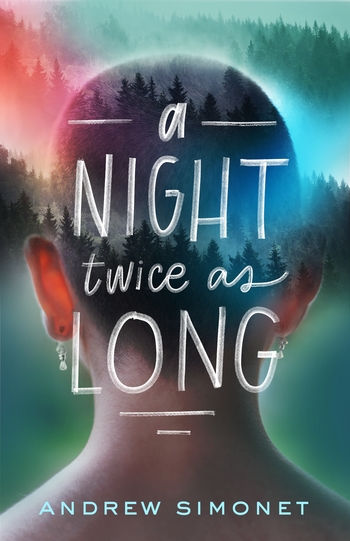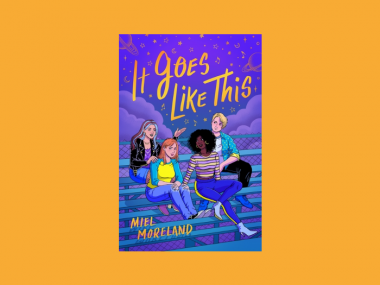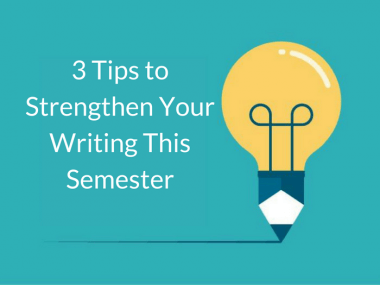Money Talk: Andrew Simonet on Becoming an Artist
Andrew Simonet, author of A Night Twice as Long, has spent years carefully balancing his artistry with his intentions, time, and money. He joined Money Girl Laura Adams for a chat about the financial side of what it takes to be an artist.

Money Girl Laura Adams: When did you decide that you wanted to become an author (or other career)?
Andrew Simonet: I decided to be a choreographer in September 1988, after my first week of dance class at age nineteen. That’s quite old to start dancing, but male dancers get a lot of leeway. It was sudden and complete. Dance was something I had been searching for without knowing it. Dance was my portal.
Writing showed up in my life at age 35. Specifically, a story showed up, an odd bunch of friends who have to protect themselves and their town from a benignly evil corporation. I dictated dialogue into a tape recorder while driving to my dance teaching job. I wrote scenes in spare moments when I traveled. I lost most of it in a computer crash and assumed I would stop, but the characters wouldn’t leave me alone.
I didn’t decide to become an Author; I decided to write. I wanted to dive into sentences and characters and story. For my own mental health, I am very careful about the difference between wanting to write (generative, expansive) and wanting to have written (paralyzing, stressful). The artist life quickly becomes brutal for those who want to have created.
Buy Now

I worked on that first novel for seven years—it has never been published—while running my dance company. The solitude of writing was a reprieve from the social intensity of dance making and collaboration.
I was interested in writing when I was young, but, seen from the present moment, I was not ready. I wrote clever, bloodless things. I had dreadfully linear things to say, restrained and over-rational. I needed twenty years of making dances to bring my body and senses and all the terrible magic of the present moment into my language.
MG: Do you write full-time?
AS: N.B.: Over the past fifteen years, I’ve worked with thousands of artists on these questions: intentions, time and money, making the art and impact that matters to you. That project, Artists U, has an open-source book with principles and tools I gathered from artists. It is how I earn half my income, the other half coming from writing.
I don’t care for the term “full-time writer/artist.” In my experience, most artists spend a similar amount of time actually making their work: between 1/5 and 1/3 of their working hours. Some spend the other hours earning money at an unrelated job; some spend the other hours promoting their art, dealing with agents, clients, galleries, and grants.
When I waited tables to pay the bills as a young choreographer, I was a full-time choreographer: Everything I did with my days was to support my artistic practice. Later, when I made a living from my dance company, I was called a “full-time” choreographer, but I did not have more time in the studio. Rather, my non-rehearsal hours were spent raising money and planning board meetings instead of serving brunch.
MG: Did you study writing (or something else) or has it always come naturally to you?
AS: Very little that I care to do comes naturally to me. Making dances is still the hardest work I’ve ever taken on. I didn’t choose it because it came easily, but because it felt impossible, unimaginable and thus unimaginably exciting.
I studied choreography at university and at an experimental dance school in the Netherlands where we threw our bodies around, and, in one piece, performers threw raw meat at the audience. All of that training in composition is compost in my writing life, and the most delightful kind, since it can’t offer opinions on what to write but rather how a thing is made.
I have not studied writing formally. Growing up, I had great teachers who introduced me to fascinating writers, and I had friends obsessed writing and art and transformation. These days, I listen closely when people talk. I read a lot. I follow other art forms, especially dance and performance. I talk to artists about practice and craft. And I talk with my artist wife constantly about art, about tiny moments of life and pathos, about precisely observed experiences.
MG: When you first started writing (or something else), were there any financial challenges? If so, how did you manage them?
AS: Everyone has financial challenges. Work that capitalism undervalues—art, social work, farming, spiritual practice, activism, community building—has an added challenge: I can’t simply apply for “job of choreographer” and start cashing checks.
If I have a reasonable budget that pays for my life and a reasonable schedule with time for art making, I can make my art.
Time and money are my—I might say the—structural challenges as an artist. There are other challenges to making art, some of them beautiful and spiritual, but the things I see stop artists, myself included, are time and money. The positive way of saying that is: If I have a reasonable budget that pays for my life and a reasonable schedule with time for art making, I can make my art. Forever. I focus on those two numbers: the dollars I need to earn and the hours I need to spend making art each month. There are many, many ways I have gotten to those numbers in the last thirty years, but always by treating it as a math puzzle, not as a question of my value or success.
MG: What advice would you give someone who’s creative or wants to change their lifestyle about balancing passion for their art and earning an income?
AS: Definitely make art. It is a powerful addition to life, a form of devotion that feeds the artist and feeds the world.
Set up your life so you can keep creating. Think in decades, not years. Art is a long, gorgeous arc.
Making art and earning money can overlap differently at different times. I have earned 0% of my income from art and 100% from art. Both were great revenue models; both helped me make work that was important to me and to my community.
Being creative and strategic about revenue can help, staying alert to unexpected ways you can generate income.
Being nonjudgmental helps, too. Earning money from my art does not make me a real artist. My commitment to my practice is what makes me a real artist. Period. A dollar earned waiting tables is worth exactly the same as a dollar earned making art.
MG: What productivity tips have helped you achieve success?
AS: Knowing myself. Tips from other artists help me when I am grounded in my practice, my life, and my community. Otherwise, I’m chasing someone else’s work and intentions, and I end up thinking something must be wrong with me because their productivity tips don’t help.
I collect tools and tactics artists use to make their work and lives. Some are directly useful, some are useful by contrast, and all provoke my thinking.
That said, I do collect tools and tactics artists use to make their work and lives. Some are directly useful (the Pomodoro method), some are useful by contrast (I could never work on five projects at a time, but I know artists who thrive that way), and all provoke my thinking.
I often steal not the idea but the thinking behind the idea. An artist told me, “I wake up at 5:00 am and go to the studio before eating breakfast.” That’s not my rhythm. But it made me think about my entry into the day, the connection between waking and creating which, it turns out, has been crucial for my writing.
MG: What do you like to spend money on that some people might consider a splurge or luxury?
AS: Time. I always look for ways to spend more time making art, thinking about art, connecting with community, doing nothing, swimming, traveling. Some of that might look to an outsider like wasted time. My life and my art are not focused around maximizing productivity. There are so many crap myths that artists must sacrifice everything for their art or their success. I find that toxic and extractive, directly opposed to the values I strive to put in my dances and my writing. I see a lot of art and think: That was made by a stressed out artist.
MG: What’s the best thing you’ve bought in the last few months?
AS: I bought a guitar from a guy in Vermont. We stood in his cold barn, I played one chord and knew it was right. To pay for it, I sold a difficult-to-play guitar given me by a former stepfather, a complicated figure in my life. I’d spent years struggling to play and to fix this awkward instrument. It was exactly like my relationship with my ex-stepfather. If you wrote this guitar into a novel, it would be a painfully obvious symbol.
MG: What’s the biggest money mistake you’ve ever made?
AS: Not buying a house in Philadelphia when I was in my twenties, preferably a multi-unit house. I could have lived in one apartment and rented out the others. Best way for artists to build assets.
MG: Tell me a financial rule that you never break.
AS: Only buy used cars, only from individuals, and always get it looked at by a trusted mechanic. No new cars, no dealers, no loans.
Know the difference between depreciating assets (cars, computers) and appreciating assets (real estate, investments.)
I am shocked to see artists struggling to pay their rent while making monthly payments on a car that loses value every day.




